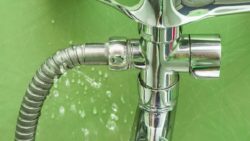
Blockage in your sewer line is often more than just an inconvenience. In severe cases, it could mean that your sewer lines or septic system need to be repaired, and if left unchecked, a block will typically grow over time, eventually leading to a backup of sewage material in your building’s drains.
As with most of your home’s systems, the sewer lines are out of sight, which means that you don’t often think about how they are doing or what is going on inside of them. What you can do, however, is recognise the symptoms of a blocked sewer pipe and respond to the situation as quickly as possible. The quicker you address a drainage issue, the easier it will be to resolve, but when you are dealing with sewer line problems, you will often need to call a plumber.
What Causes a Block?
Believe it or not, one of the leading causes of sewer line blockage is tree roots. Tree roots can creep in through loose joints and tiny cracks, and while they may not be big enough to block the drain themselves, solid materials will get stuck on the root rather than flow through the drain. The build-up of solid materials is what often creates the block.
Another cause for a block would be a broken or collapsed pipe, and in this scenario, you might notice flooding outside in addition to the indoor clog. Tree roots may also grow around your sewer lines and crush them.
Flushing the wrong things down the toilet and pouring the wrong things into your sink can also result in a blocked sewer pipe. Grease and fat can harden in your sewer lines, building up and collecting other material over time, but flushing things such as napkins, baby wipes, or facial tissues is bound to create a block as well.
Recognising a Block in Your Sewer Lines
A blocked sewer line can create problems and noises all around the house, so it’s important to take note of anything unusual. All of the following are some of the early signs of a sewer line block, and addressing the issue at this point will help you avoid more expensive repairs.
- Consistently slow drains are a sign of a sewer line block, especially when the drains continue to be slow after DIY attempts to clear them.
- If multiple plumbing fixtures are clogged at the same time, you most likely have a block in your main sewer line. In this case, the issue would begin at the toilet, but if the toilet flushes correctly while other fixtures are clogged, the block is probably somewhere else.
- When your sewer line is clogged, water will back up into the shower drains or floor drains, especially after flushing the toilet.
- If your toilet bubbles or gurgles when you run your sink or your shower, you may have a clogged sewer line.
- Lastly, watch what happens when your washing machine drains. If you had a clog, your toilet could overflow, or water could back up into the shower once your washing machine drains.
DIY Solutions for Blocks
Your DIY options for clearing a blocked sewer pipe are pretty limited. Your first instinct may be to pour chemicals down your drain, and while this could work, it isn’t something that you want to keep trying. Depending on the nature of the block, continuing to pour things down your drains could worsen the problem.
If you suspect that the issue is a tree root, you might be able to get your hands on some copper sulphate or a root-killing foam, both of which should kill the root after a while.
Another thing that you can do is release some pressure in your system. Your sewage system should have what is called a “cleanout line,” which is a pipe with a cap that plumbers use to access your sewer line. Sometimes, removing the cap releases the pressure in your system and allows your system to drain once again.
Why and When to Call a Plumber
If simple DIY remedies don’t do the trick, you will need to call a plumber before the situation escalates. Plumbers have far better tools and equipment to efficiently clear some of the toughest blocks, and they also have the technology to precisely locate the blockage, as well.
Keep in mind that all of the symptoms listed above are reason enough to call a plumber, and calling your plumbers early will reduce the amount of work that you need to put into the issue.
Plumbers use CCTV technology to inspect your sewer lines with a small camera. The camera manoeuvres through the pipes and allows your plumbers to see what’s going on inside. This allows them to locate the block with precision, and knowing where the block is reduces the amount of guesswork involved. They can target that specific location and remove the block as quickly as possible.
To clear out a blocked sewer pipe, Mark Leonard Plumbing might use a power-assisted auger or a water-jetting tool to force whatever is blocking your sewer lines down the drain. The auger is a metal cable that can tear apart roots and rip apart debris, thereby allowing the material to flow down the drain. Depending on what is most appropriate, our plumbers might also use their water-jetting tool, which sends high-pressured water into your drain to clear away any build-up of debris.




